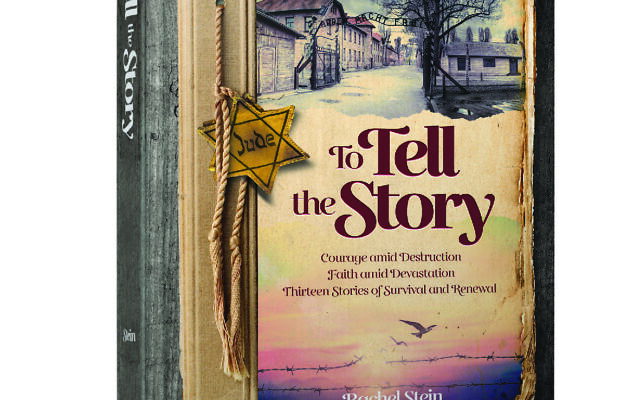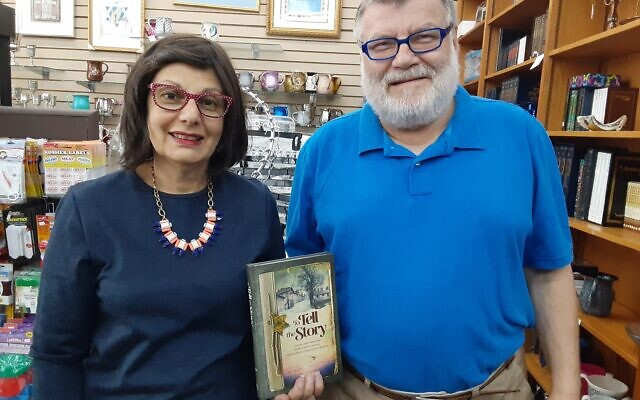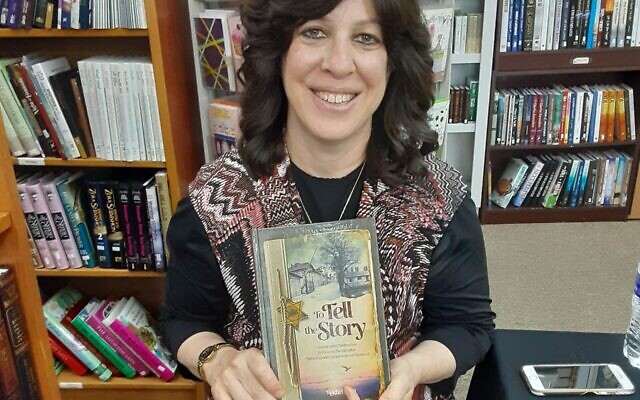Stein Explores Lives Shaped by Holocaust
Thirteen Holocaust survivors relate their stories of courage, devastation, renewal and miracles in this collection by author Rachel Stein.
Chana Shapiro is an educator, writer, editor and illustrator whose work has appeared in journals, newspapers and magazines. She is a regular contributor to the AJT.
Atlanta author Rachel Stein dedicates “To Tell the Story” to “the heroes and heroines within these pages. What gave you the strength to live through seemingly endless torture and brutality? How were you able to start anew?”
Stein does her best to answer these questions. This volume contains gripping stories of 13 Holocaust survivors who came from diverse backgrounds and different European countries. Many of them eventually made their home in Atlanta where they rebuilt their lives, raised their families, and became active members and builders of the Jewish community.

To present the uniqueness of each survival story, every account is treated as an entity, with its own theme and brief introduction. Pre-World War II photographs deepen the contents with pictures of family members mentioned in the narratives. The juxtapositions of survivors’ halcyon early years, the horrors of the concentration and work camps, and their subsequent fulfilling and productive lives make each story poignant and instructive.
Many of the survivors will be familiar to readers who know them as respected Atlanta business owners, community builders and educators. “To Tell the Story” opens doors into their past.
Helen Borkowsky Gerson, in her chapter “The Laughing Bomb,” states, “We Holocaust survivors were like family. Only those who had lived through the indescribable suffering could understand. We looked forward to a fresh start, and what better way than to get married and have a family?” As in other cities, survivors in Atlanta gravitated toward each other and socialized regularly. Their children bonded as well, and some families were eager to make matches between their offspring.
Dr. Mark and Marsha Strazynski are an Atlanta couple, whose survivor parents Rachmil and Pola Strazynski and John and Helen Gilmer, narrate their own separate stories in the chapters “Two Fiery Torches” and “A Storehouse of Love,” respectively. Mark’s parents returned to Poland after the war, and he grew up there, still experiencing anti-Semitism. “I like to hear the survivor stories,” he said, “because each one has its own message of courage. Now that I’m an adult, I wish I had more of an understanding of how my parents’ lives were shaped by the Holocaust.”

Marsha believes that her gentle, loving father was driven to survive by his anger and desire for revenge. At the Strazynski-Gilmer “second generation” wedding, Rabbi Emanual Feldman declared, “As we stand here with these two survivors’ children under the chuppah, we’re witness to a phoenix flying out of a raging fire. This is our revenge. These two people, whom Hitler tried to prevent from ever being born, are demonstrative of our ultimate survival.”
Stein successfully assumes the survivors’ personalities, emotions and beliefs to emphasize the individuality of each speaker by writing in their “voices,” their speaking styles. Most of the survivors in “To Tell the Story” are no longer living. Therefore, in addition to Stein’s own live interviews, their children and relatives added details and anecdotes.
All the protagonists in “To Tell the Story” have their own truths and insights. Atlantan Lucy Carson, in her chapter “Behind the Walls,” reflects, “I witnessed the worst evil imaginable. Cruelty surrounded me, and I lived in constant fear. And yet, I was privileged to see the incredible greatness and kindness of the human heart. Caring strangers risked their lives time and time again to save me and so many others.”
In spite of their differences, the 13 sagas share common themes. All of the survivors consider their survival a G-d-given miracle. All of them exhibited impossible endurance and all witnessed individual acts of generosity and compassion amid depravation and death.
Recently, the AJT joined Holocaust survivors, their children and grandchildren, who were among the many visitors at Judaica Corner gift shop in Toco Hills for the launch and signing of “To Tell the Story.” The room resounded with iterations of “Rachel, thank you for writing these memoirs!”
One slight drawback to the book is Stein’s decision to honor every personality by capturing their words with such precision. Lacking a helpful glossary, some words, phrases and concepts, which were integral to the lives of the speakers, will be unfamiliar to the reader. Nevertheless, when taken in context, a reader will be able to discern the meaning and move on, without losing the continuity of each unforgettable story.
- art
- Community
- Rachel Stein
- Chana Shapiro
- holocaust
- World War II
- Concentration camp
- Helen Borkowsky Gerson
- Lucy Carson
- Mark Strazynski
- Marsha Strazynski
- Rachmil and Pola Strazynski
- John and Helen Gilmer
- second generation
- Poland
- Atlanta
- Rabbi Emanual Feldman
- Judaica Corner
- “To Tell the Story"
- Survivor
- Arts




comments